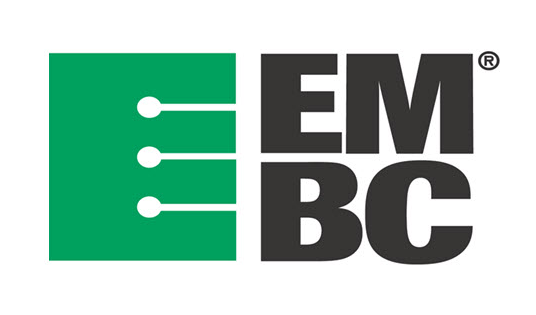EEMBC, the industry-consortium setting the standard for valuable and practical embedded system benchmarks, today announced the availability of EEMBC ULPMark-Peripheral Profile (ULPMark-PP), a tool to measure the energy efficiency of microcontrollers (MCUs) and their commonly-used, programmable peripherals. The ULPMark-PP reveals how efficiently each MCU vendor has designed and implemented its integrated peripherals. Simultaneously, EEMBC is publishing the first results from ULPMark-PP, coming from EEMBC members such as STMicroelectronics, to demonstrate the value of this benchmark.
An important aspect of selecting a microcontroller is the collection of peripherals integrated into the chip. These peripherals offload the MCU’s core and perform functions the core couldn’t do alone. These peripheral-based functions include analog-to-digital conversion (ADC), real-time clock (RTC), serial peripheral interface (SPI), and pulse-width modulation (PWM); all are tested and analyzed for efficiency by the ULPMark-PP benchmark. To evaluate an MCU, the ULPMark-PP tests these peripherals in different ways.
“A long time ago, in a much simpler world, datasheet specifications were established to help engineers understand how devices worked and evaluate if they were suitable for particular projects. With the complexity of today’s projects and MCUs, it has become infinitely harder to evaluate an MCU’s relevant performance and efficiency. The ability to fairly evaluate the peripheral efficiency from all MCU vendors is even tougher,” said Monica Redon, chair of the EEMBC ULPMark working group and applications engineer at Analog Devices. “So we are ecstatic to see the initial results for ULPMark-PP, adding more value to our previously published, top-of-the-chart results for the EEMBC ULPMark-CP.”
“Because every application has different needs to optimize power, performance, and cost, providing valuable and relevant micro controller benchmarks requires ‘peeling the onion’ to understand which MCU is best for each application, said Mark Wallis, co-chair of the EEMBC IoT working group and system architect at STMicroelectronics. “In addition to sharing our application expertise with the other outstanding EEMBC Working Group team, EEMBC has adopted ST’s energy-testing solution, currently in the final development stages, which will facilitate benchmarking and ultimately assure validated results.”
The ULPMark-PP supplements EEMBC’s original ULPMark-CoreProfile (ULPMark-CP), a benchmark that measures the efficiency of only the MCU’s core. Specifically, ULPMark-CP wakes up every second to perform a brief CPU task before returning to an ultra-low-power mode. Both ULPMark benchmarks are further supplemented by the EEMBC IoTMark-BLE that measures the energy used by the full subsystem including the MCU, the radio, and the protocol stack. Finally, EEMBC will also soon make available SecureMark, a security benchmark that mimics a typical TLS (Transport Layer Security) ciphersuite, as used by modern IoT devices, using basic security primitives like elliptic curve cryptography and AES.
“For maximum testing efficiency, ULPMark, IoTMark, and SecureMark all utilize EEMBC’s flexible, IoTConnect benchmark framework. This framework is built on inexpensive, industry standard hardware components, including a soon-to-be-available energy-measurement technology developed by ST that was used to generate the published results from both companies, that allow us to make these benchmarks easily accessible to embedded system designers for their own due-diligence testing,” said Peter Torelli, EEMBC director of technology. “The EEMBC benchmarks make embedded system designers AND semiconductor manufacturers’ jobs easier by encouraging them to use industry-standard benchmark results to inform their decisions, rather than having to demystify, normalize, or validate unsubstantiated claims from competitors.”
“The ULPMark working group has done the near-impossible in delivering this highly-beneficial benchmark, but a benchmark without benchmark results is like an electric car without electricity to charge it,” said Markus Levy, EEMBC president. “The initial ULPMark-PP results indicate that there is a huge efficiency difference between microcontrollers. Furthermore, these results also highlight the benefits of running at 1.8-2.0 volts versus 3.0 volts. Beyond this, I encourage all embedded system developers to encourage their MCU vendors to publish the results for their devices. A comprehensive table of ULPMark-PP results significantly adds credibility and real-world comparability to the specifications in datasheets.”
All interested parties are welcome to join the EEMBC Low Power Subcommittee and participate in working groups for ULPMark, IoTMark, and SecureMark. Non-members should contact EEMBC to license any of these benchmarks.
Current working group members include Ambiq Micro, Analog Devices, Arm, Cypress Semiconductor, Dialog Semiconductor, Flex, Intel, Microchip, Nordic Semiconductor, NXP, ON Semiconductor, Renesas, Silicon Labs, STMicroelectronics, Synopsys, and Texas Instruments. Contact EEMBC directly for more information; www.eembc.org.








